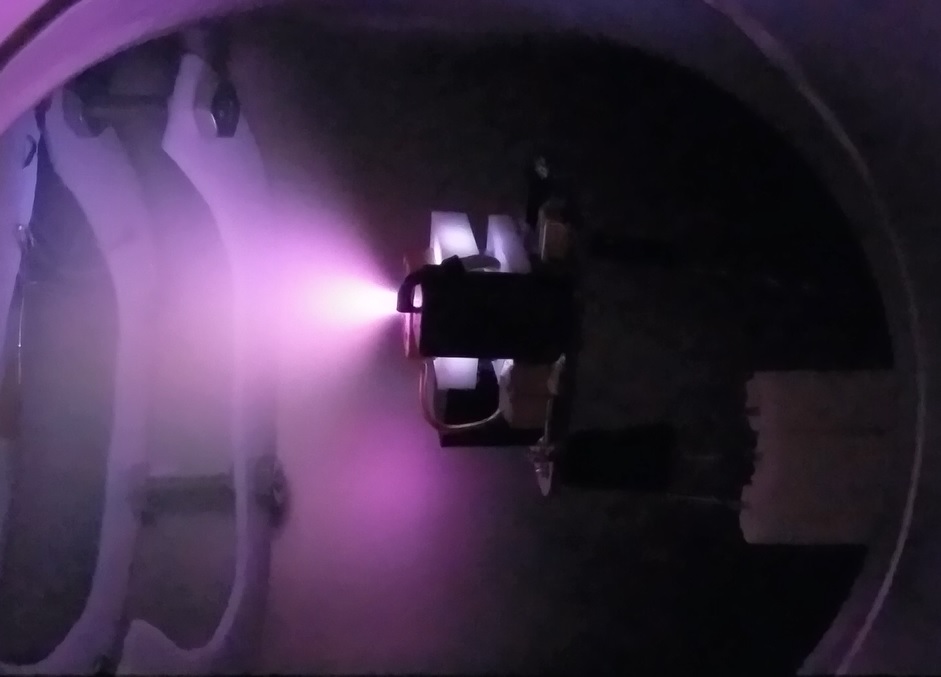I finally did it. Months of work, many successes and failures, hundreds upon hundreds of hours of research, testing, preparation, prototyping, and it all came down to this single most crucial and important test ever performed at Applied Ion Systems – the first high vacuum ignition test of the AIS-gPPT3-1C PocketQube Propulsion Module. On Friday night, September 6th, 2019, the propulsion module was successfully fired for the first time in high vacuum. Not only did it fire, but it fired absolutely flawlessly without issue. Perfect control and ignition with the Arduino controller. Not a single missed pulse. The results, as you can see, are utterly stunning.
Words can’t describe the sense of accomplishment after seeing that first pulse of plasma, and the continued train of pulses after. It was a surreal moment. The first ever openly available and open source propulsion module for PocketQubes was finally firing. This represents a massive advance in the propulsion field. Not only has propulsion technology been successfully miniaturized for PocketQubes, but this is the first time a full, complete advanced electric propulsion module, designed and built completely from scratch at home, has been tested and fired in high vacuum. These efforts are the first and only true at-home open-source advanced electric propulsion engineering program out there. This is also the first fully open source propulsion module out there to be available on the market. The test also validated numerous key design aspects, all of which had yet to be tested. New electrode geometry. New fuel bore geometry. New electronics. Embedded magnetic nozzle. And potentially the lowest energy PPT ever designed and fired, with a total main bank energy of only 0.09 Joules!
The support from the community has also been amazing as well, and I would have never gotten this far without the support and encouragement of all my friends and acquaintances cheering me on. In particular, the PocketQube community has given me an opportunity to apply my unique skillset and knowledge-base to a currently un-tackled challenge, and strive for more than just experimenting with thrusters at home, but to develop a fully compatible and use-able propulsion module for PocketQubes, which has yet to be realized until now.
I started my high vacuum endeavors with Applied Ion Systems over a year ago. In just 8 months, I went from absolutely nothing but ideas and scribbles on paper for simple pulsed plasma thrusters, to a major technical advance in electric propulsion, with a fully home-built system and complete thruster module, at a dedicated hobbyist level budget. This is only the beginning of the journey. Now it is time to take this effort to the next level. Full thruster qualification, new fuels, and further optimizing the design, breaking barriers in the propulsion field with a radically different approach than seen before. There are man more exciting advances to come for sure from Applied Ion Systems. Advances in space technology and propulsion CAN be accomplished in an open-source manner, even at home!

